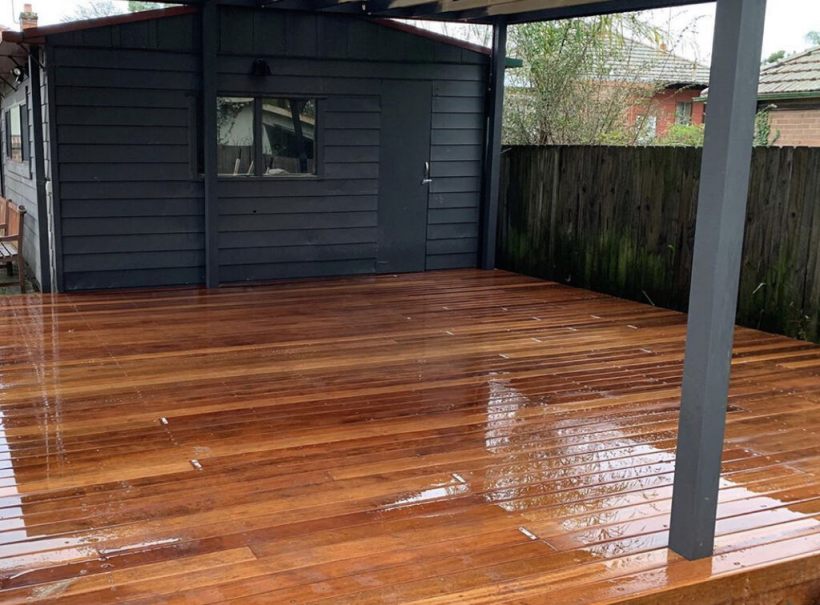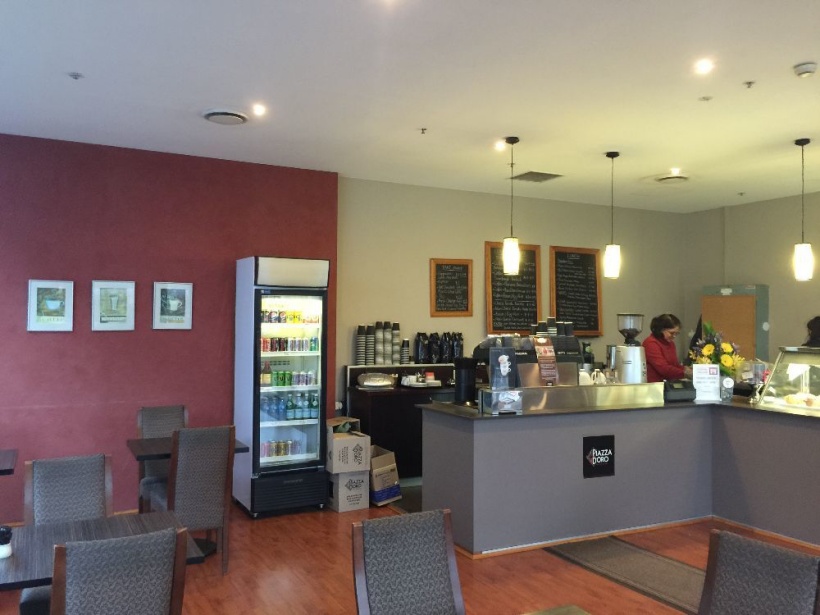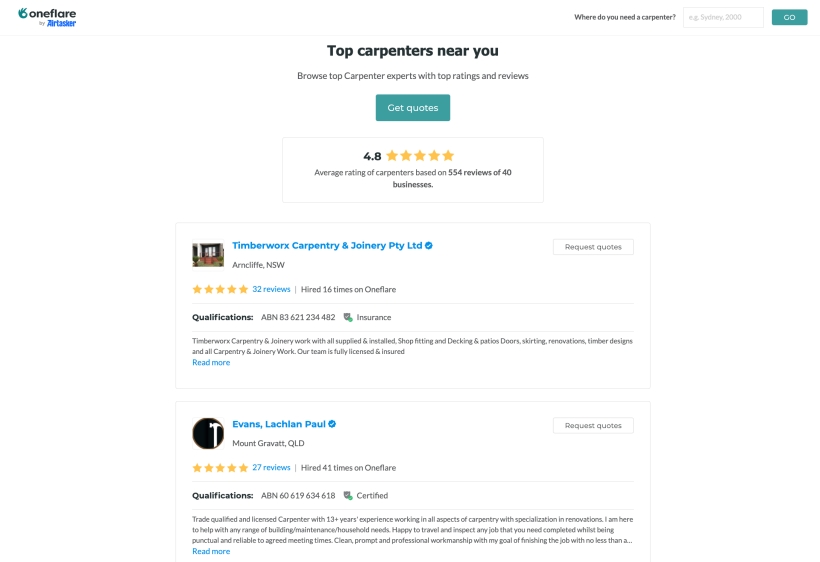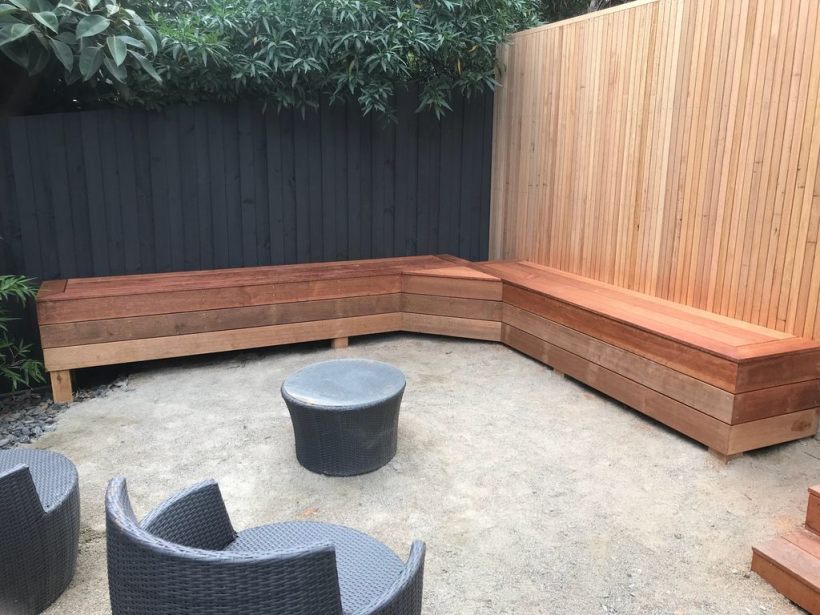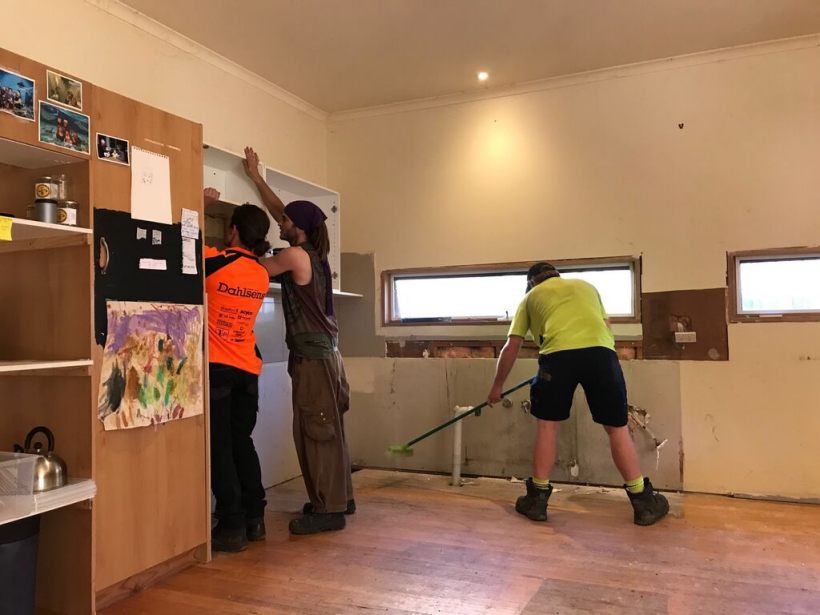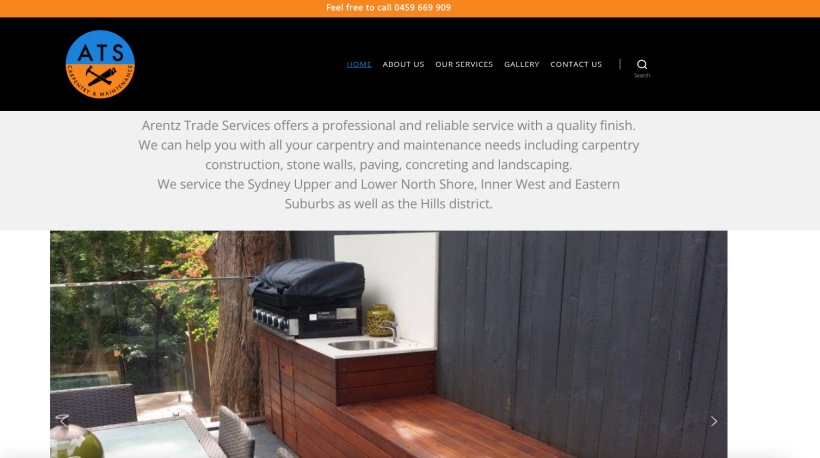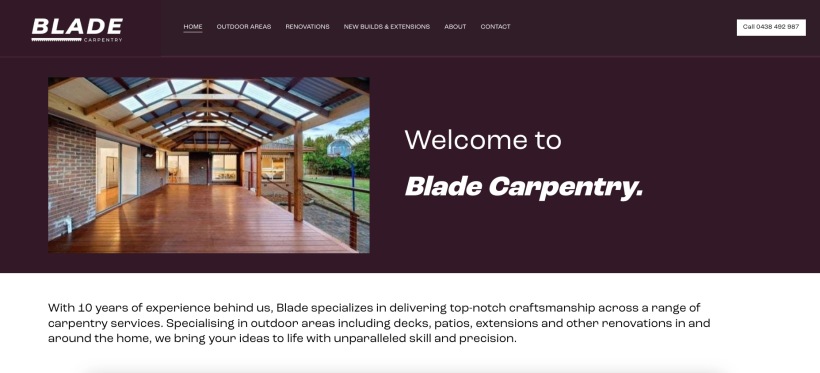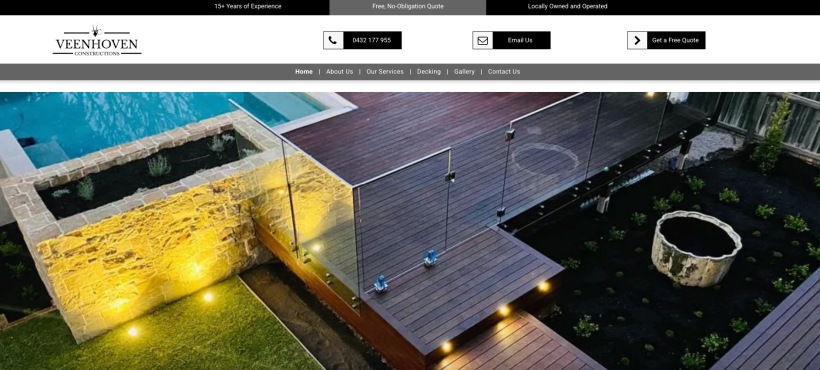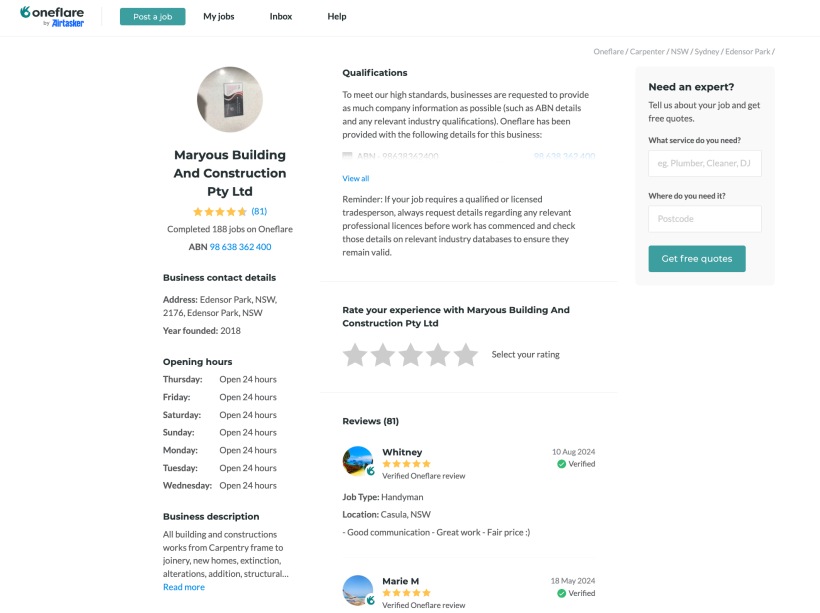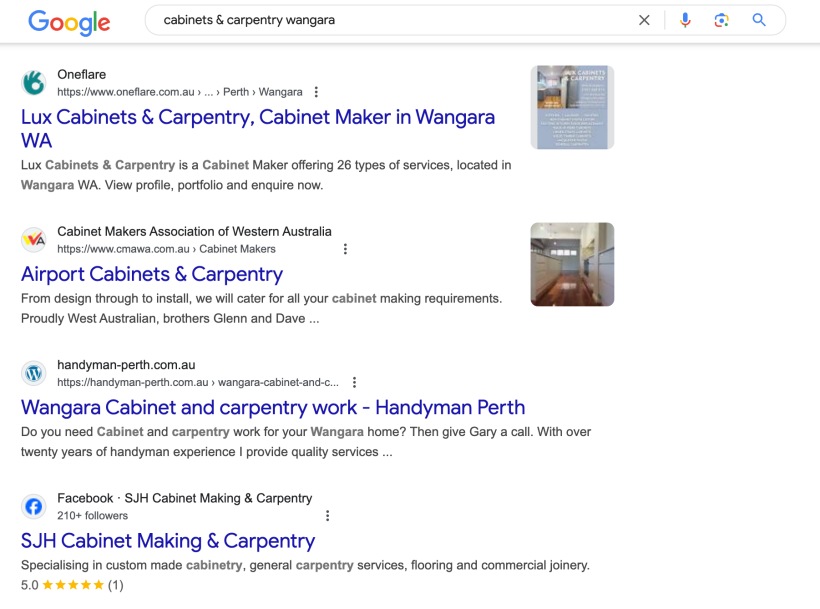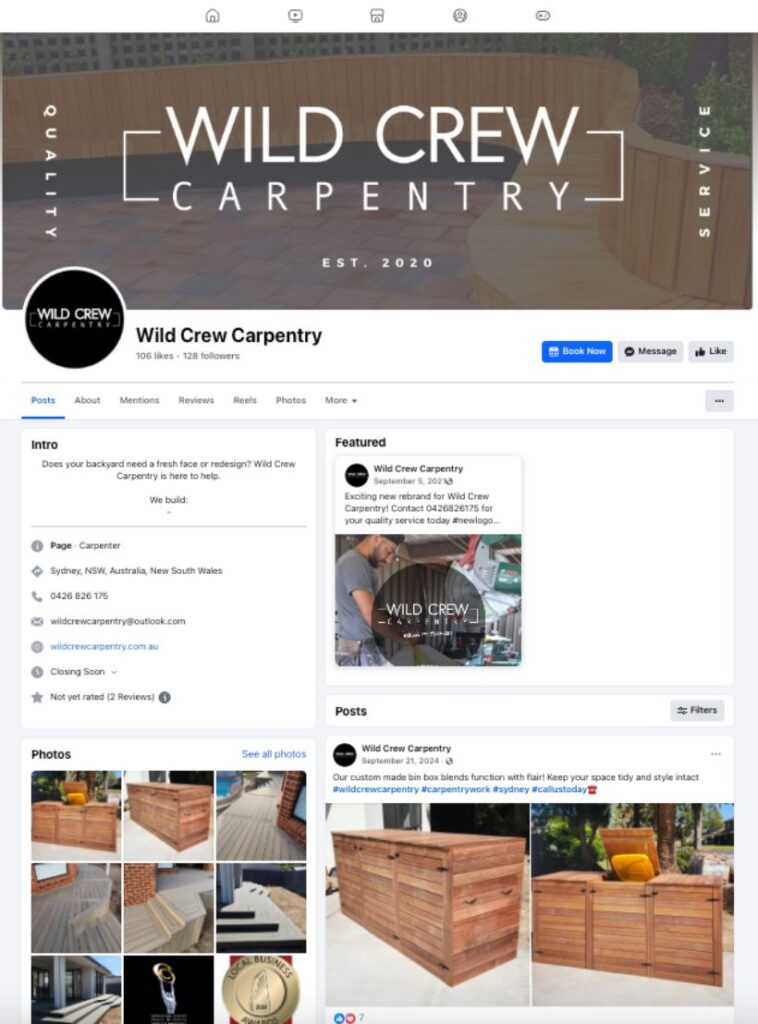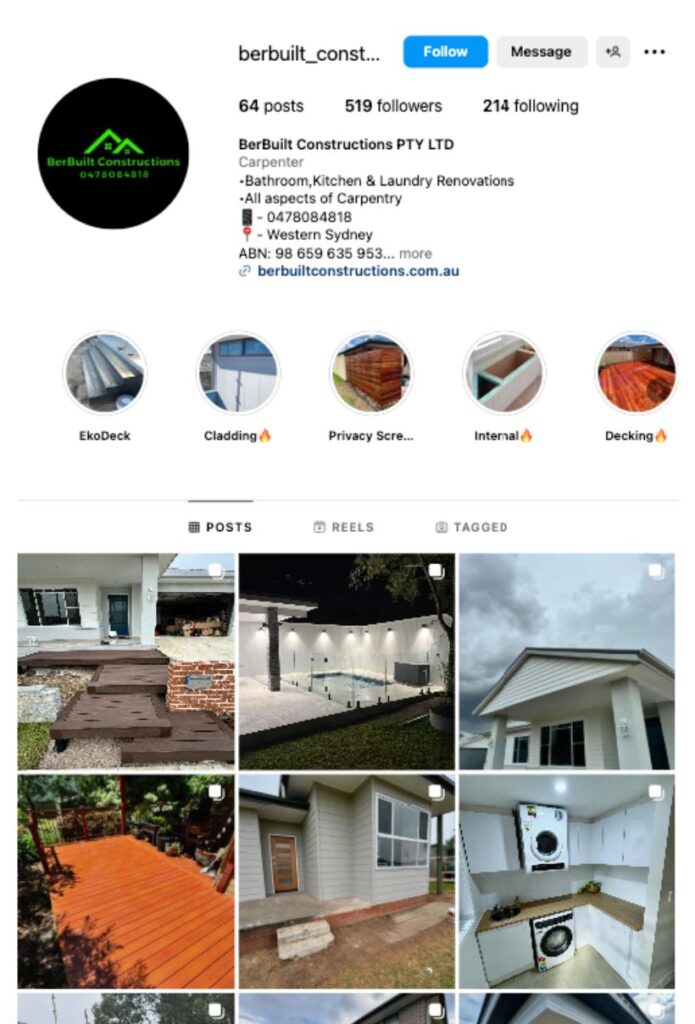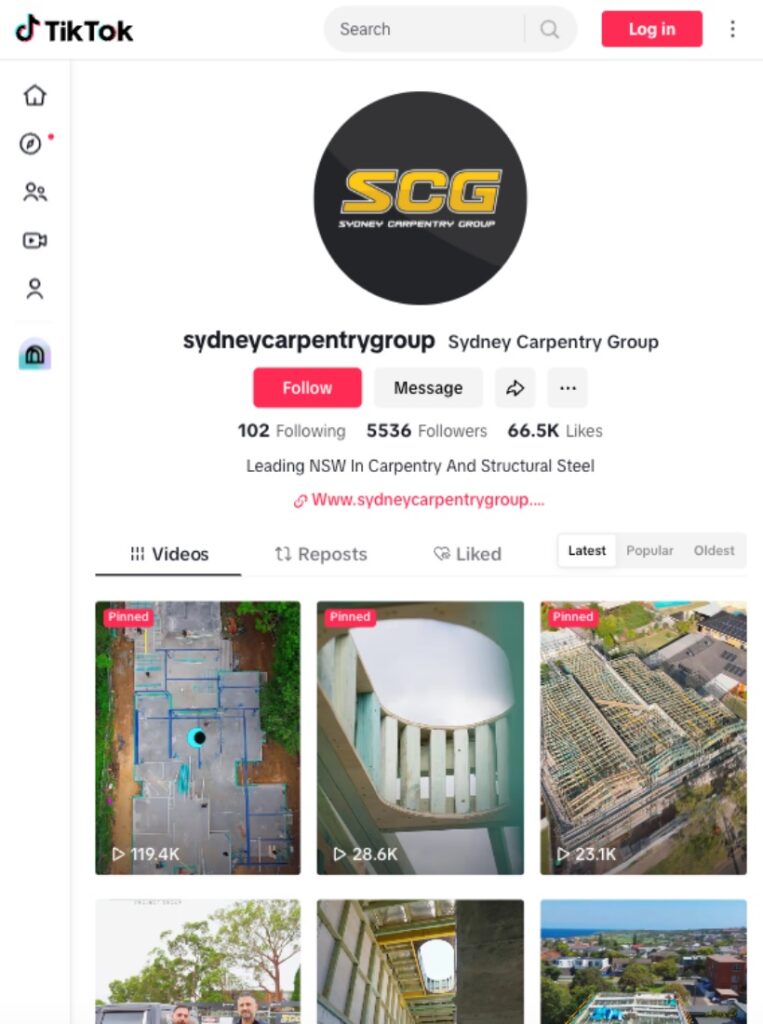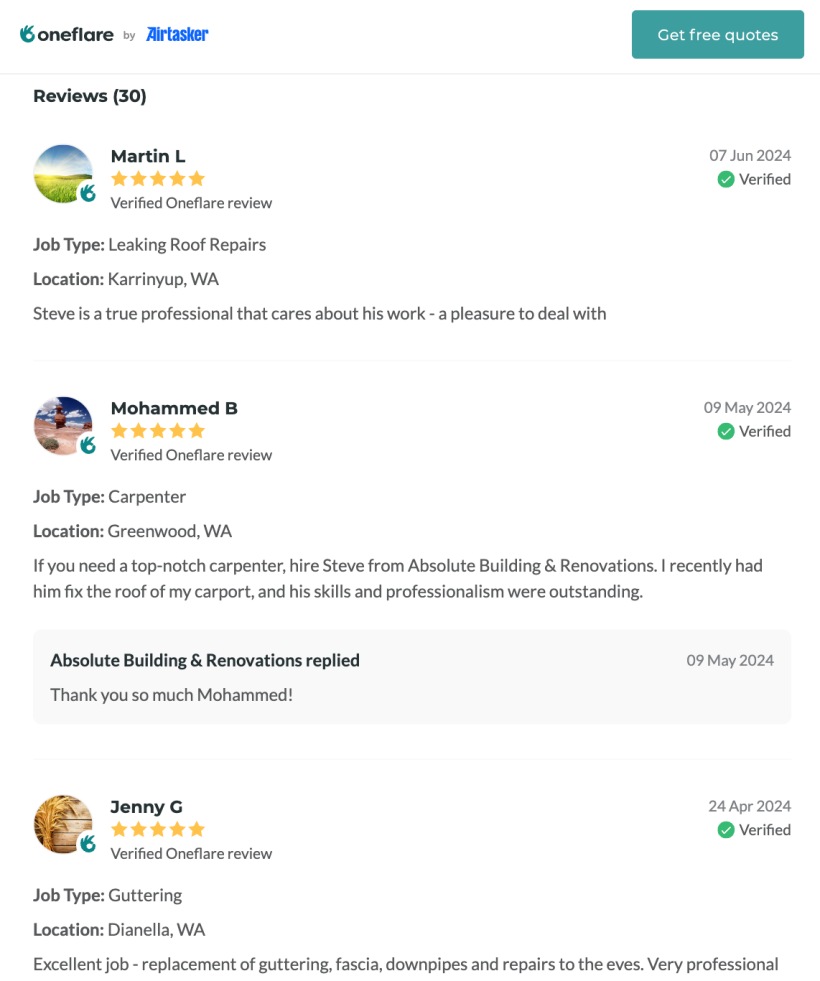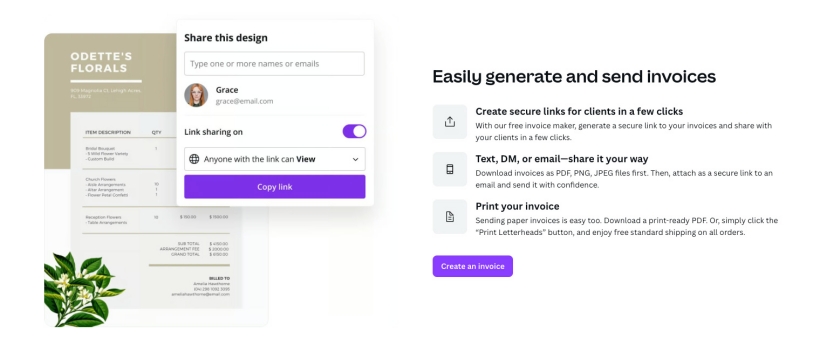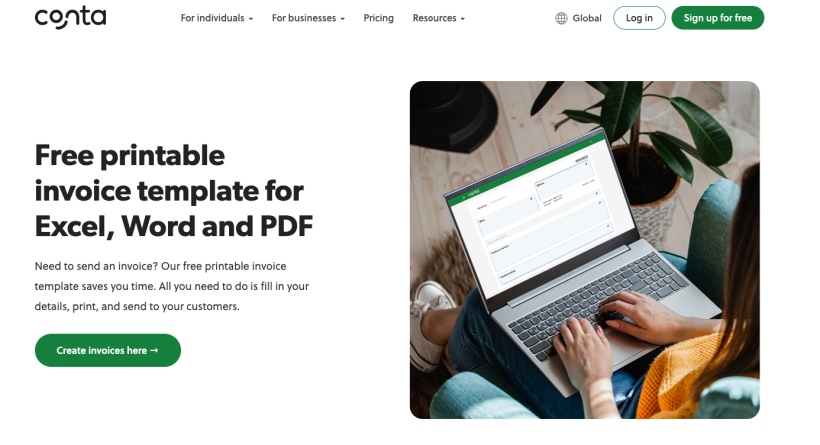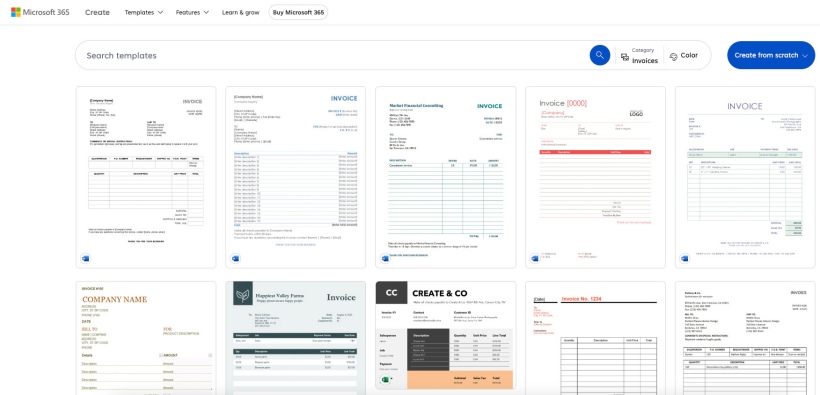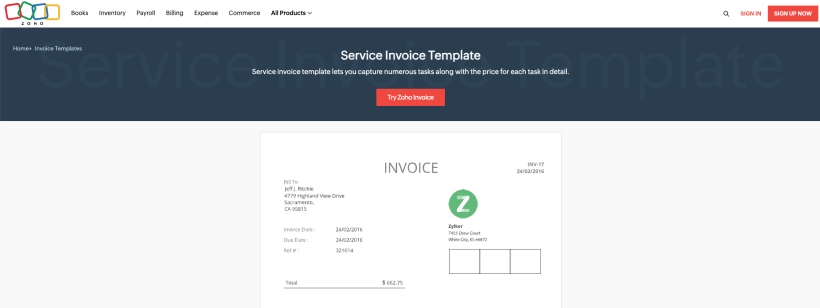Starting a gardening business can be a rewarding way to turn your passion for plants and outdoor spaces into a thriving income. Whether you’re looking to take on smaller residential projects or build a broader portfolio, the path to success is about getting the basics right from the beginning.
This guide will give you helpful and practical advice on how to start a gardening business in Australia.
- Step 1: Identify the market of your gardening business
- Step 2: Plan for seasonal trends in the gardening industry
- Step 3: Research market rates and analyse competitors in the gardening industry
- Step 4: Explore funding options for your gardening business
- Step 5: Develop a strategic gardening business plan
- Step 6: Register your gardening business
- Step 7: Hire your gardeners
- Step 8: Invest in the right gardening tools and equipment
- Step 9: Find clients for your gardening business
- Step 10: Get paid for your gardening services!
- Cultivate your gardening business with Oneflare today!
Step 1: Identify the market of your gardening business
Identifying the right market is key to attracting clients and growing your gardening business. Tailor your offerings to the specific needs of your community—whether it’s lawn care, landscaping, or ongoing maintenance. By targeting the right audience and solving their problems, you’ll build a strong reputation and attract clients more effectively.
Explore different types of gardening services
There are various types of gardening services you can offer depending on your skills, equipment, and the needs of your clients. Let’s delve deeper into these common gardening services:
Garden maintenance
Including garden maintenance in your services ensures that your clients’ gardens stay healthy, attractive, and well-maintained year-round. This ongoing care, which includes tasks like general clean up, installing sod or artificial grass, and lawn care helps build lasting relationships with clients. Offering this service creates a steady income stream while enhancing your reputation as a reliable, all-in-one gardening expert.

Garden renovation
Garden renovation involves transforming or revitalising an existing garden to improve its appearance, functionality, or overall design. This can range from minor upgrades to complete overhauls like creating a vertical garden for small spaces and a dedicated area where the client can grow produce like tomatoes or even a sunflower garden– all depending on the client’s needs and vision.
Lawn care and turf installation
Lawn care and turf installation are essential services for homeowners looking to maintain or establish a healthy, vibrant lawn. Properly installing synthetic turf and nurturing the lawn is required to ensure that the client’s lawn stays lush, green, and free of weeds.
Hedge trimming and topiary
Offering hedge trimming and topiary services is essential for maintaining the shape, health, and aesthetics of your clients’ shrubs and bushes. These services help keep gardens looking neat and well-manicured, enhancing their overall appearance. By including them in your offerings, you provide clients with a polished, professional garden that stands out.
Weed management
Weed management is the process of controlling and removing unwanted plants like crabgrass that compete with the garden’s desired plants for nutrients, water, and sunlight. Effective weed management helps maintain a healthy and attractive garden while preventing weeds from spreading.
Seasonal planting and garden bed design
Seasonal planting and garden bed design keep gardens vibrant year-round by selecting plants that thrive in each season. Preparing the garden for winter with hardy plants ensures it remains healthy and ready to bloom in warmer months.
Offering these services not only enhances the garden’s appeal but also positions you as an expert in maintaining gardens through all seasons.
Irrigation system installation and maintenance
Irrigation system installation and maintenance ensure gardens receive the right amount of water efficiently. Tailored systems like drip irrigation or sprinklers are installed to meet the specific needs of each garden.
Regular upkeep offered by professional gardening services helps prevent damage, conserve water, and support healthy plant growth, making it an essential service for maintaining a thriving garden.
Tree care and pruning
If your gardening business includes creating a rainforest garden, tree care and pruning are essential in maintaining the health and appearance of trees by removing dead or overgrown branches, improving airflow, and promoting healthy growth.
Hardscaping and pathway installation
Hardscaping and pathway installation create durable, attractive features like patios and walkways, enhancing garden functionality and aesthetics. Consider offering expertise in selecting the right synthetic grass to add business value, ensuring your clients a lush, green look that complements their overall garden design.

Composting and soil improvement services
Composting and soil improvement services enhance soil health by adding organic matter and nutrients. This promotes better drainage, supports healthy plant growth, and helps create a more sustainable, thriving garden.
Choose your gardening business niche
Choosing your gardening business niche is essential for standing out in a competitive market. By focusing on specific types of gardening services, you can target a particular audience and build expertise in that area.
Residential garden maintenance niche
The residential garden maintenance niche focuses on providing ongoing care for homeowners, including lawn mowing, hedge trimming, weeding, and seasonal clean-ups. You can also offer a maintenance service focused on keeping their garden pet-friendly, so that their fur companions can roam around safely and freely.
- Pros: Consistent income and long-term client relationships
- Cons: Typically priced lower compared to larger landscaping or design projects
Garden design and landscaping niche
The garden design and landscaping niche involves creating customised outdoor spaces, including plant selection, hardscaping, and garden layout design. This niche is extremely helpful especially if you’re working with smaller gardens.
- Pros: Opportunity to showcase creativity and design skills
- Cons: Requires more expertise, planning, and time due to complexity

Organic and sustainable gardening niche
The organic and sustainable gardening niche focuses on eco-friendly practices, using natural methods to grow plants, improve soil health, and reduce environmental impact.
- Pros: Attracts clients who value sustainability and green living.
- Cons: Requires more specialised knowledge and higher costs for organic products
Edible gardening business niche
The edible gardening business niche focuses on helping clients grow their own fruits, vegetables, herbs, and other edible plants.
- Pros: Targets the interest in homegrown food and healthy living
- Cons: Clients will need regular guidance to successfully grow and harvest their edible crops.
Commercial and property maintenance niche
The commercial and property maintenance niche involves providing gardening and landscaping services to larger and high-scale clients.
- Pros: Opportunity for consistent work, as commercial properties typically require regular maintenance throughout the year.
- Cons: Requires a larger team and more extensive resources to handle bigger projects and maintain multiple properties
Decide on the service area for your gardening business
Determining where to establish or expand your gardening business is crucial for its success. By identifying regions with the highest demand for gardening services, you can position yourself in areas where your business is more likely to thrive.
The table below highlights the demand for gardening services across various cities in Australia, based on Oneflare’s job posting data from 2024. We’ll break down the demand in each city and explore the factors driving the need for professional gardeners in these areas.
| City | Percentage Share of Total Gardening Job Demand |
| Gardening services in Melbourne | 22.5% |
| Gardening services in Perth | 18.1% |
| Gardening services in Brisbane | 17.4% |
| Gardening services in Sydney | 16.0% |
| Gardening services in Adelaide | 5.2% |
Australian cities with the highest gardening job demand
Melbourne leads the gardening business demand in 2024, holding a significant 22.5% share of total job demand. This demand can be attributed to the city’s large urban population, which often requires professional gardening services to maintain private gardens, especially in suburban areas.
Perth follows with an 18.1% share. Perth’s climate and a strong preference for outdoor spaces among residents likely fuel this demand, as regular maintenance is essential to keep gardens thriving in its dry conditions.
Brisbane ranks third with 17.4% of the total demand. Its tropical climate and higher prevalence of greenery mean consistent upkeep is required, driving significant demand for professional gardeners.
Australian cities with lower gardening job demand
Sydney and Adelaide show comparatively lower shares, with Sydney at 16.0% and Adelaide at 5.2%. Although Sydney’s urban density may limit large gardens, its affluent suburbs still provide opportunities. Businesses can cater to Sydney by focusing on niche services such as vertical gardening and rooftop gardens.
Smaller cities like Adelaide present a modest market. However, businesses here can capitalise on less competition and offer premium or specialised services tailored to local preferences, such as native plant landscaping or drought-resistant gardening solutions.
Step 2: Plan for seasonal trends in the gardening industry
Understanding seasonal trends in the gardening business is essential for managing demand fluctuations and optimising your operations.
For example, gardening services often experience a surge in bookings during spring and summer, as these seasons are ideal for planting, lawn care, and outdoor projects. Winter, though less busy, can offer unique opportunities for tasks like pruning, soil preparation, and garden renovation in preparation for the growing season.

Some months may bring a significant influx of clients, while others slow down, making it crucial to plan ahead. By strategically adapting to these seasonal cycles, you can maintain consistent revenue and ensure business stability throughout the year, regardless of demand variations.
Identify popular seasons for gardening services
According to Oneflare’s 2024 data on the total job postings for each type of service, the 2024 seasonality data for gardening services highlights January, October, and February as the peak months for various gardening services in Australia.
Key factors influencing these peak months include seasonal growth patterns, outdoor events, and the need for garden preparations during spring and summer. Warmer weather in these months also encourages homeowners to invest in garden care and landscaping projects.
Peak season for garden maintenance
Garden maintenance sees its busiest months in January, February, and October. The demand in January and February is largely driven by the need to clean up and rejuvenate gardens after the holiday season. Additionally, the fast-growing plants during summer months necessitate regular upkeep.
In October, as spring reaches its peak, homeowners often focus on ensuring their gardens are well-maintained to enjoy outdoor activities and gatherings.
Peak season for garden renovation
Garden renovation demand peaks in October, September, and February. Spring months like October and September are ideal for extensive garden overhauls, as the moderate temperatures and increased rainfall provide optimal conditions for planting and landscaping.
February also experiences a notable rise in demand, likely due to the completion of summer projects and preparations for the autumn season.
Peak season for turf installation
Turf installation is most in demand during October, September, and August. The spring months of October and September are particularly favourable for laying turf, as the mild weather and consistent rainfall help establish new lawns effectively. August also sees an increase in demand as homeowners prepare their outdoor spaces for the upcoming warmer months.
Peak season for lawn mowing
The busiest months for lawn mowing are January, February, and October. During the peak summer months of January and February, lawns grow rapidly due to the warm weather and require frequent mowing. October, with its spring growth surge, also drives significant demand as homeowners aim to keep their lawns well-groomed.
Peak season for lawn care and fertilisation
Lawn care and fertilisation see the highest demand in October, September, and March. Spring months such as October and September are crucial for feeding lawns to encourage growth after winter dormancy. March also marks an important period for fertilisation as homeowners prepare their lawns to endure the cooler autumn months.
Peak season for landscaping services
The busiest months for landscaping services are October, September, and February. October and September, in spring, are ideal for landscaping projects as the mild weather and consistent rainfall create perfect conditions for planting and outdoor transformations.
February sees significant demand as the late summer period allows for the completion of large-scale landscaping projects. This timing ensures that gardens are ready to transition smoothly into autumn while maintaining their aesthetic appeal and functionality.
Plan strategies to adapt to seasonal fluctuations
To ensure steady business throughout the year, it’s essential to plan strategies that adapt to seasonal fluctuations. Diversifying your offerings and staying proactive with marketing can help smooth out income gaps and keep your business running consistently, regardless of the season.
Diversify your gardening service offerings
During peak seasons, like spring and summer, focus on high-demand services such as lawn mowing, hedge trimming, and general garden maintenance. Homeowners are more likely to invest in keeping their gardens tidy and vibrant during these months, providing a steady stream of work.
In quieter months, like autumn and winter, pivot to specialised services such as garden design, pruning, or indoor plant care. These tasks are less reliant on the growing season and can keep your business active year-round. Offering one-off services like garden redesigns or indoor plant installations ensures consistent income, even during slower times.
Offer seasonal packages and gardening promotions
Seasonal packages and promotions can help attract clients year-round. In spring and summer, offer deals on lawn care and planting vibrant, warm-weather plants like marigolds or native Australian species. Tailoring your services to the season keeps clients engaged and encourages repeat business.
Plan for flexible staffing
Planning for flexible staffing is key to managing fluctuating demand. As your business grows, consider hiring additional help during peak seasons or for larger projects. When hiring a gardener, look for someone with experience, reliability, and a passion for the work. Flexibly adding staff as needed allows you to meet client demands without overextending yourself.
Post on lead generation sites to secure recurring gardening clients
Posting on lead generation sites like Oneflare can help you secure recurring gardening clients. By listing your services on these platforms, you increase your visibility to homeowners and businesses actively seeking gardening help. With a well-crafted profile and competitive pricing, you can attract clients looking for regular maintenance or long-term care, ensuring a steady stream of work.

Register your gardening business on Oneflare today and connect with clients searching for trusted gardeners like you!
Step 3: Research market rates and analyse competitors in the gardening industry
Researching market rates and analysing competitors in the gardening industry is essential to set competitive pricing for your services. By understanding the average cost of gardening services in your area, you can ensure your prices are in line with local expectations while maintaining profitability.
Understand the cost of common gardening services
Several factors influence the cost of gardening services, including the size and complexity of the job, the type of services offered, the location of the property, and the equipment and materials needed. Additionally, the level of expertise required and the time it takes to complete the job also play a role in determining the overall cost.
Here’s a breakdown of the typical costs for various gardening services in Australia:
| Type of Gardening Service | Average Cost Range |
| Garden maintenance cost | $50 – $120 per visit |
| Lawn mowing cost | $35 – $55 per hour |
| Pruning and hedging cost | $45 – $150 per session |
| Garden clean-up cost | $45 – $120 per service |
| Turf installation (natural grass) cost | $7 – $13 per square metre |
| Artificial grass installation cost | $50 – $100 per square metre |
| Landscape design and installation cost | $20,000 – $44,550 per project |
| Irrigation system installation cost | $1,800 – $5,200 per system |
| Mulching cost | $15 – $65 per cubic yard |
| Weed control cost | $50 – $125 per application |
By considering these influences, you can set fair prices that reflect the value of your services while staying competitive in the market.
Please note, however, that the costs mentioned are estimates and may vary depending on the specific job and local market conditions.
Decide how to charge for gardening services
To determine how gardeners must charge, it’s helpful to research local market rates and competitor pricing, while considering your skill level and the quality of service you provide. This will allow you to set fair and competitive rates that attract clients and sustain your business.
Hourly rate for quick gardening services
An hourly rate for quick gardening services is ideal for smaller tasks like lawn mowing or hedge trimming. It allows clients to pay based on the time spent, offering transparency and flexibility.
Setting a competitive hourly rate requires researching local market rates to ensure fair pricing for both you and your clients. Remember not to sell yourself short!
Per-service rates for recurring gardening services and routine maintenance
Per-service rates for recurring gardening services and routine maintenance provide clients with a fixed cost for each visit, making budgeting easier. By offering per-service rates, you create a predictable income stream and build long-term relationships with clients who require ongoing care for their gardens.
Per square metre rates for gardening services like lawn installation and paving
Per square metre rates for gardening services, such as lawn installation and paving, allow clients to pay based on the size of the area being worked on. This pricing model is ideal for larger projects, as it provides a clear, straightforward way to estimate costs.
Project-based rates for large-scale gardening projects
Project-based rates for large-scale gardening projects offer a fixed price for the entire job, regardless of time or materials. This pricing model is ideal for extensive projects like garden design, landscaping, or major renovations, where the scope of work is clear from the start.
Evaluate your unique selling points (USPs)
Evaluating your unique selling points (USPs) is crucial for differentiating your gardening business in a competitive market. USPs highlight what sets your services apart.
By identifying and promoting these strengths, you can attract clients who value what makes your business stand out, helping you build a loyal customer base and grow your reputation in the industry.
Eco-friendly and sustainable gardening practices
Eco-friendly and sustainable gardening practices focus on using natural methods to maintain gardens while reducing environmental impact. This approach attracts environmentally conscious clients and promotes a greener future.
Customised garden solutions
These solutions ensure that every garden is both functional and aesthetically pleasing, with seasonal gardening practices incorporated to keep spaces thriving year-round. By providing customised services, businesses can address specific needs, creating unique outdoor spaces that perfectly reflect the client’s vision and requirements.
Reliable, consistent, and on-time gardening services
These attributes are essential for building trust and satisfaction with clients. By ensuring punctuality and delivering high-quality work consistently, businesses can foster long-term relationships and a strong reputation.
Clients appreciate dependable services that maintain their gardens to a high standard, making timeliness and reliability key factors in customer retention and business growth.
Full-range gardening services
Full-range gardening services cover all aspects of garden care, from designing retaining walls and landscaping to regular maintenance and seasonal tasks. This comprehensive approach ensures that clients can rely on a single provider for all their gardening needs.
Offering a wide variety of services helps attract diverse clients and builds long-term relationships by providing a complete solution for every garden.

Step 4: Explore funding options for your gardening business
Securing funding for your gardening business is an essential first step, and it’s crucial to seek professional advice before making any financial commitments. Consulting with financial planners and local accountants can help you understand the implications of each option and choose the best fit for your business goals.

Self-funding
Self-funding involves using personal savings or funds from family and friends. This approach allows full control over finances without needing to meet lender requirements, although it also involves using personal financial resources.
Small business loans
Australian banks and financial institutions offer small business loans designed for startups. These loans generally require a business plan, financial projections, and a good credit history. Small business loans can provide the capital needed for startup expenses, with set repayment terms and interest.
Secured and unsecured business loans
Both secured and unsecured business loans are small business loans that can be viable funding options for purchasing initial gardening business supplies, equipment, and transportation assets.
Secured loans offer manageable, low-interest rates, provided collateral is available. This collateral could include personal assets such as residential properties or assets associated with your gardening business, like vehicles, gardening tools, and equipment.
Meanwhile, an unsecured loan offers businesses fast access to funds without collateral. However, they generally have higher interest rates with shorter loan terms than secured loans, so the monthly payments can be higher.
Government and industry programs
Certain Australian states provide grants and financial support for small businesses, especially those with innovative or eco-friendly services. These programs are structured to assist with initial costs and often have specific application requirements and conditions.
The New Enterprise Incentive Scheme (NEIS) is one of the government programs in Australia that supports job seekers who want to start small businesses. This offers new entrepreneurs mentorship, accredited training, and income support to help them sustain themselves while establishing their businesses without requiring immediate profit. However, NEIS does not directly fund business costs, so startup capital would still need to be sourced separately.
Equity Investment
Equity investment is a funding option where investors provide money to a business in exchange for ownership shares to secure a stake in the company. Startup gardening businesses can secure significant funds without taking on debt that needs immediate repayment through equity investment.
There are two types of equity investors: angel investors and venture capitalists (VCs). Angel investors are typically high-net-worth individuals who invest their personal funds into early-stage companies in exchange for equity. Meanwhile, venture capitalists are firms or groups that pool funds from multiple investors to support high-potential businesses.
Step 5: Develop a strategic gardening business plan
Starting a gardening business requires a well-thought-out business plan. This plan will be your roadmap, guiding you through each stage of starting and running your business.

It should include key elements, such as:
- Executive summary
- Company profile
- Business description
- Market analysis
- Services offered and pricing strategy
- Marketing strategies
- Budget and cash flow forecast
- Operations plan
- Risk mitigation strategy
- Long-term growth plan
Now, let’s dive into the step-by-step process to create a business plan tailored to your gardening business.
Draft an executive summary
First, begin with the executive summary, which is a brief overview of your gardening business and your goals. This section gives readers a quick sense of what your business is all about. Summarise what services you’ll offer, your target market, and what sets you apart from competitors. It’s often best to write this last so it truly reflects the rest of your plan.
Write your gardening business description
Your gardening business plan also needs a clear company description. In this section, outline the foundational details of your gardening business, including its legal business structure (e.g., sole trader, company, partnership, etc.), ownership details, business name, and location.
Moreover, your company description should describe your business’s vision, mission, and core values. This section will provide essential context as you move into the more operational and financial specifics of your business plan.
Describe your gardening business niche and types of services
The next step is to define the focus of your gardening business, whether it’s regular garden maintenance, landscape design, irrigation system installation, or a specific niche such as organic gardening, edible gardens, or sustainable landscaping.

Clarify why you chose this niche and provide a brief description of your target market. For instance, your target audience could be homeowners seeking a well-maintained garden, businesses needing professional landscaping, or individuals looking for unique and personalised gardening solutions such as eco-friendly designs or low-maintenance outdoor spaces.
Analyse your market and define your customer base
Once you have completed writing your company profile and gardening business niche, it’s time to define your customer base. First, you’ll need to conduct a market analysis to understand your target customers, local competitors, and industry trends.
From there, outline who your ideal clients are, what they need, and how you plan to serve them better than competitors. This analysis will help you identify market gaps and inform your service offerings.
Outline your gardening services and pricing strategy
Your business plan should also specify the types of gardening services you’ll offer and your pricing approach. Consider the costs of supplies, labour, and other expenses to price competitively yet profitably. Plus, think about whether you’ll offer package deals, discounts for repeat clients, or seasonal promotions.
Detail your marketing and sales plan
For your marketing and sales plan, you need to map out how you’ll attract and retain clients. Detail your marketing channels—such as social media, SEO, or partnerships—and any customer loyalty or referral programs. Think practically about your initial steps to grow your client base and raise brand awareness in your target market.
Create a budget and forecast cash flow
The budget and forecast cash flow is a crucial part of your business plan. For this section, it’s wise to break down your startup costs, monthly operating expenses, and anticipated revenue.
Include one-time expenses such as equipment and marketing materials, as well as recurring costs like supplies, transportation, and insurance.
Then, project your cash flow to understand when you’ll reach profitability and how to manage finances through any seasonal ups and downs.
Establish an operations plan
The operations plan details how you’ll manage day-to-day operations, including hiring, training, and scheduling. Here, describe systems you’ll implement to maintain high-quality service, handle customer feedback, and manage bookings or billing. This section is key to ensuring smooth, efficient operations as your business grows.
Develop a risk mitigation strategy
After the operations plan, develop a risk management plan to address potential challenges and safeguards for your business. Identify key risks when starting a gardening business, such as adverse weather affecting scheduled work, injuries during a gardening task, and property damage while working on client sites. Outline safety protocols and detail the types of business insurance coverage needed, like public liability insurance and equipment insurance.
Conclude with a long-term growth plan
Lastly, conclude with a long-term growth plan to demonstrate your vision for the future and commitment to sustainable growth. In this section, you need to define both short-term and long-term objectives of your business, such as adding new gardening services, increasing your client base, or expanding to new locations. Outline strategies to retain existing clients, such as loyalty programs, and how you plan to scale your marketing efforts.
Step 6: Register your gardening business
To start a gardening business, you may need to obtain registrations, licenses and permits. As a business owner, it’s your responsibility to make sure you’re compliant with all applicable laws and meet your tax obligations.
For information about registering your business or applying for an ABN, we recommend you check out this helpful information from the Australian government.
Step 7: Hire your gardeners
Building a reliable team for your gardening business is essential for your company’s success and growth. Below, we’ll discuss how you can hire gardeners and ensure that they meet your business’s needs.

Write job description
First and foremost, you need to create a job description that highlights your business and what you offer. Be transparent about job duties, hours, pay, employment type and any training opportunities. Describe specific tasks (such as garden maintenance, landscape design, installing irrigation systems, or creating themed gardens) and any qualifications or technical skills required. This helps candidates understand expectations from the start and ensures a good match for the role.
Most candidates also appreciate knowing the pay range, benefits, or potential for growth within the company. If you offer flexible hours, a supportive team environment, or training for new employees, mention these aspects. This can make your ad stand out and attract applicants who genuinely want to be part of a stable, rewarding role in a growing company.
Use local Australian platforms to advertise your job
After crafting the job ad, post it on multiple platforms to maximise its visibility. To reach the best candidates and find the right gardeners for your business, you may consider advertising on platforms that are popular and effective in Australia, such as:
- SEEK – Australia’s largest job board, ideal for professional job seekers across industries.
- Indeed Australia – a wide-reaching job platform, popular among full-time and part-time job seekers.
- Jora – a job aggregator that pulls listings from various sources, increasing visibility.
- Workforce Australia – a free job advertising service from the government, suitable for small business owners.
You might also consider posting on social media platforms such as Facebook, LinkedIn, or Instagram if you have a business page. For a local touch, posting on community boards or participating in job fairs can attract applicants in your area.
Don’t overlook employee referrals, either—current employees often know reliable candidates, and offering a referral bonus can incentivise them to help bring in great new hires.
Screen and interview thoughtfully
As applications start coming in, review them carefully to find candidates with the right qualifications and experience. Conduct initial interviews with the most promising applicants to gauge their interest in the role, gardening skills, and alignment with your business.
This is the perfect chance to ask questions that reveal their previous experience, problem-solving abilities, and reliability. For example, you might ask how they managed challenging gardening projects in the past, dealt with unexpected weather conditions or last-minute changes, or met tight deadlines while delivering high-quality gardening results and customer satisfaction.
It’s also helpful to perform criminal history checks and reference checks to ensure the trustworthiness of your candidates. This is particularly important if your gardeners will work in sensitive environments like offices or schools. A quick call to past employers can provide insight into their reliability, history, and work quality.
Make an offer and onboard your new hire
When you’ve selected your top candidate, make a clear and detailed job offer that outlines pay, benefits, work hours, and expectations.
Once they’ve accepted your offer, the next step is running a smooth onboarding process to set up your new hires for success. Start with training sessions to introduce them to your gardening business’s standards, client communication protocols, and the specific workflows or tools they’ll use to ensure efficient and high-quality gardening services.
If possible, have them shadow an experienced team member for their first few shifts so they can learn on the job. After their first week, check in with them and provide feedback to support their improvement and integration into the team.
Offer ongoing support and fair treatment
A supportive work environment promotes employee retention. Openly address concerns about shifts, workload, and safety. This initiative will help create a positive work culture that encourages loyalty and productivity among your staff.
Step 8: Invest in the right gardening tools and equipment
Investing in the right gardening tools and equipment is crucial for delivering efficient and high-quality services. High-quality tools help improve productivity, ensure precision, and reduce time spent on each job.
Bear in mind, though, that each gardening business niche requires specialised tools and equipment. Here’s a breakdown of some key items and their estimated costs:
| Gardening Business Tools and Equipment | Price Range | Where to Buy |
| Gardening tools set | $100 – $500 | Aussie Gardener, Bunnings |
| Lawn mowers and trimmers | $200 – $1,500 | Tools Warehouse, Bunnings |
| Irrigation equipment | $150 – $1,000 | StrataGreen, Sage Horticultural |
| Professional-grade pruners and shears | $50 – $300 | Quality Garden Supplies, Backyard Botanist |
| Portable mulching machines | $500 – $2,000 | The Garden Superstore, Bunnings |
| Soil testing kits | $20 – $200 | GardensOnline, Aussie Gardener |
| Protective clothing and gear | $50 – $300 | Green Hip Workwear, Bunnings |
Note: Prices are approximate and may vary depending on retailers, brands, and product quality.
Step 9: Find clients for your gardening business
Finding clients for your gardening business involves a mix of networking, marketing, and leveraging online platforms like Oneflare.
By focusing on establishing long-term relationships and showcasing your expertise along with these strategies, you can steadily grow your client base and establish a strong reputation in the community.
Expand your online presence
Expanding your online presence is essential for growing your gardening business and reaching a wider audience. Creating a professional website, engaging on social media platforms, and listing your business online help increase visibility and attract new clients.
Build your gardening business website
A website is essential for establishing your gardening business’s credibility and providing clients with easy access to your services. It allows potential clients to learn about your offerings, view testimonials, and request quotes directly. Working with a web designer can ensure a user-friendly, optimised site that effectively showcases your services and improves search visibility.
To guide you, we’ve compiled examples of successful gardening business websites that display the effectiveness of building a good website to boost brand credibility and improve customer experience.
Fox Mowing & Gardening
The Fox Mowing & Gardening website boasts a striking green accent colour to accentuate its relevance to nature. It features an easy-to-navigate layout with a clear portfolio of garden transformations and organised service descriptions. Customer testimonials are prominently displayed, showcasing the business’s reliability and high-quality work.

Green Outdoor
Gardening expertise is clearly highlighted In the Green Outdoor website where they address common client pain points such as overgrown lawns and lack of time for garden upkeep. The website copy effectively communicates how the team can solve these issues with professional care and tailored solutions.

Services are listed with detailed descriptions, ensuring clients understand exactly what’s offered and how it meets their specific needs, making it easy for them to choose the right service.
Rgs Landscape Care
On the Rgs Landscape Care website, landscape maintenance is the main focus, highlighting the team’s skills in keeping gardens vibrant and well-maintained throughout the year. Other services are also clearly listed, offering a full range of solutions. The site provides free quotations, allowing potential clients to easily get an estimate and understand the cost of services upfront.

Post on lead generation platforms
Posting on lead-generation platforms is one of the most effective ways for gardening businesses to find clients. These platforms connect you directly with clients actively searching for gardening services, providing an immediate source of leads.

Oneflare, in particular, allows you to showcase your gardening expertise without upfront fees, making it easier to attract clients with minimal risk. This platform’s job posting system helps bring in quality leads and enables you to specify job types, budgets, and locations, so you can target projects that fit your capabilities and business goals.
Get started on Oneflare by registering your gardening business today—connect with clients, post targeted jobs, and grow your business with ease!
SEO and paid search for visibility
SEO and paid search improve your website’s visibility in search engine results, attracting organic traffic. While effective, SEO requires regular updates and can be costly in competitive areas. Consulting an SEO specialist helps implement ranking strategies to boost your business’s online presence.

Social media advertising
Social media advertising helps you reach a wide audience and showcase your gardening work and portfolio visually. Targeted ads on Facebook, Instagram, and even TikTok can attract local clients, but maintaining a presence requires ongoing posting and budget management. A social media manager can optimise your campaigns for consistent engagement.
The following sections provide samples to inspire you and give you an idea of how social media advertising works. They showcase effective strategies for boosting a gardening business’s visibility on Facebook, Instagram, and TikTok.
Gardener’s Touch – Facebook advertising
The Gardener’s Touch Facebook account features photos and videos of the team in action, showcasing their expertise through real-time project updates. Each post highlights their skill and attention to detail, building trust with potential clients.

Must Have Maintenance – Instagram advertising
The Must Have Maintenance Instagram account showcases stunning images of completed garden projects, giving clients a clear view of the team’s craftsmanship. Each photo highlights beautifully designed landscapes, offering potential clients inspiration and a glimpse of what their own gardens could look like after expert care and transformation.

Earth Edge Garden – TikTok advertising
The Earth Edge Garden Tiktok account features captivating content showcasing garden transformations and projects in progress. Each video has a therapeutic feel, with calming visuals of the team at work, turning overgrown spaces into stunning gardens. The soothing pace and satisfying results create a binge-worthy experience, making viewers want to watch more and imagine their own outdoor spaces being transformed.

Build your gardening business’s reputation through reviews and referrals
A strong reputation is key to long-term success. Encourage satisfied clients to leave reviews on your website or lead platforms like Oneflare to boost credibility and attract new gardening clients. Consistent reviews on a platform ensure reliable feedback, helping potential clients trust your quality.

Take bookings and manage quotes efficiently
Responding quickly to quote requests can also help you win gardening jobs, as clients often select the first reliable response. In fact, Oneflare data reveals that 60% of winning quotes are submitted within 60 minutes of the job posting, highlighting that faster quotes significantly boost job success rates.
Here are some tools that can help with automated booking and quoting:
- Calendly – Enables easy scheduling by allowing clients to book available time slots directly, reducing back-and-forth communication.
- Square Appointments – Provides booking, invoicing, and payment processing in one platform, helping streamline the client experience.
- Setmore – Offers online booking with customisable reminders, plus client management and integration with social media for easy appointment setting.
- HoneyBook – Combines booking, quoting, and invoicing, letting you automate responses and manage projects all in one place.
- Zoho Bookings – Integrates with Zoho CRM to manage client relationships, offers automated reminders, and allows for easy rescheduling.
These tools help you automate responses, manage quote requests, and follow up with clients, ensuring that no lead falls through the cracks.
Step 10: Get paid for your gardening services!
Now that you have everything set up, from choosing your business niche and setting up your service area, to finally finding your clients, it’s time to finally get paid for your gardening services. Here’s how:

Choose a reliable accounting software
Managing payments is a lot easier with a dedicated accounting system. This will save you time, reduce errors, and give you a clear picture of your finances.
Some popular accounting software options commonly used in Australia are:
- Xero – easy-to-use software with invoicing, bank feeds, and reporting.
- MYOB – offers payroll, tax tracking, and inventory management.
- QuickBooks Online – handles invoicing, expense tracking, and payments.
- Reckon One – customisable and budget-friendly, with modules for payroll and invoicing.
- Sage Business Cloud Accounting – simple solution for expense tracking and payroll.
Create a gardening business invoice
Creating a professional invoice template is essential to get paid quickly. The invoice should clearly list your services, rates, and payment terms.
Many accounting platforms offer customisable gardening services invoice templates, but you can start with free templates and modify them as needed. Consider these free gardening invoice templates as a guide:
Canva’s gardening invoice templates
It’s easily customisable with fields for services, rates, and payment terms. You can also add your logo and other brand elements to maintain consistency across all client communications.

Conta’s gardening invoice templates
It provides a customisable, downloadable template specifically tailored for gardening services. The good thing about these templates is that they’re compatible with Google Docs, Microsoft Word, and Excel, allowing you to easily tailor them as needed.

Microsoft Office’s gardening invoice templates
It offers free invoice templates that are straightforward and professional and can be saved as a PDF. Even better, they have Excel-based templates that can automate calculations, streamlining the billing process and reducing errors.

Zoho’s gardening invoice templates
The template offers a clean and organized layout, ensuring clarity and professionalism in client communications. It includes essential sections such as service details, additional charges, taxes, and terms and conditions, facilitating accurate and transparent billing.

Set up a bank account for business payments
Separating personal and business finances with a dedicated bank account makes it easier to track income, manage deposits, and handle reconciliations. Most banks offer online options specifically for businesses, streamlining all your financial needs in one place.
Offer digital payment options
Make payments easy and convenient for clients by providing digital options like Apple Pay, Google Pay, credit cards, and bank transfers. Many clients, especially those booking gardening services through platforms like Oneflare, prefer the flexibility of paying directly from their devices. Offering digital payments not only enhances client satisfaction but also speeds up the payment process, helping you maintain a reliable cash flow.
Establish clear payment terms
Define your payment terms upfront to avoid confusion—include due dates, late fees, and preferred payment methods. Clear terms, such as a 14-day payment window, help maintain a steady cash flow and foster professional client relationships.
Cultivate your gardening business with Oneflare today!
Starting your gardening business is an exciting journey, and each step you take nurtures the soil of success. From defining your services to building a loyal client base, every action you take strengthens your reputation and sets you up for long-term growth.
Ready to let your business flourish? Register your gardening business and post your services on Oneflare to connect with homeowners and businesses in need of expert gardening help.
Start today and watch your gardening business flourish!
FAQs on how to start a gardening business
Which is the best example of a sustainable practice that might be used in a garden?
One of the best examples of a sustainable practice in gardening is using native plants. Native plants are well-suited to the local climate and soil conditions, meaning they require less water, fertiliser, and pesticides to thrive.
Where is the best place to advertise gardening services?
The best places to advertise gardening services are online platforms like Oneflare, and local business directories, where homeowners and businesses actively search for professional help. Social media platforms are great for showcasing your work.
Traditional methods like flyers and business cards are also effective for attracting local clients. A mix of online and offline advertising helps you reach a broad audience.
How much does it cost to start a gardening business?
Starting a gardening business typically costs between $2,000 and $5,000. Essential expenses include tools (lawnmowers, trimmers), business registration, insurance, and marketing. Costs can vary depending on the scale of your operation, but keeping overheads low in the beginning is key to managing expenses.




























